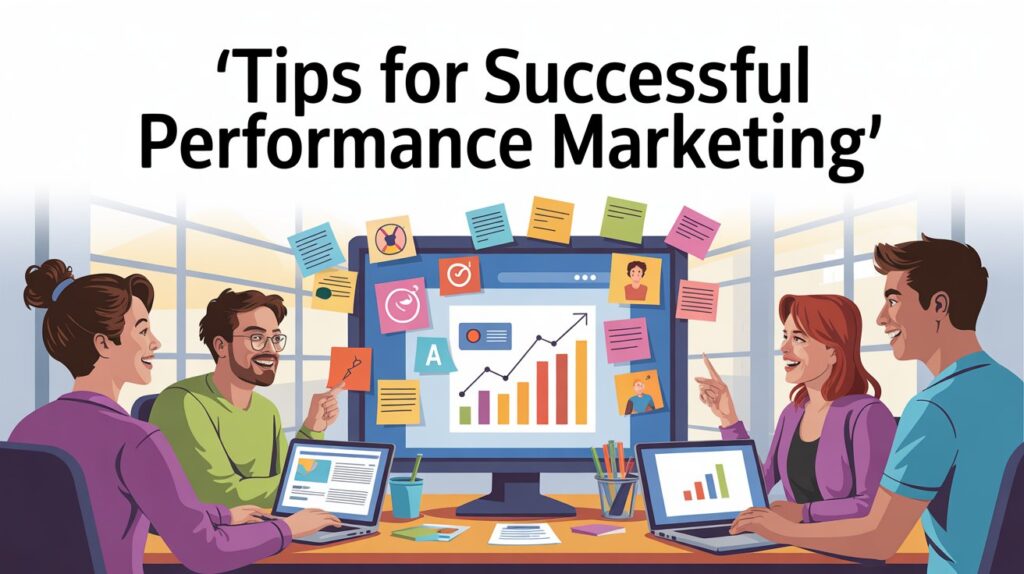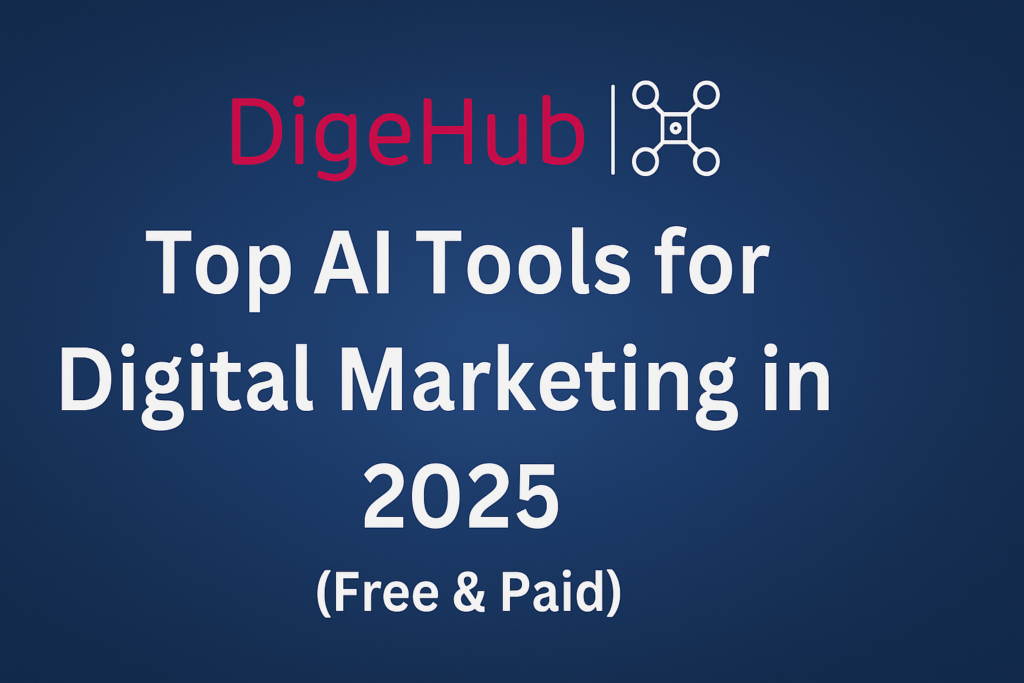Beginner’s Guide to Performance Marketing: How to Launch & Optimize ROI-Driven Campaigns

If you’re stepping into the world of digital marketing and have heard the term performance marketing but aren’t quite sure where to start — you’re not alone. Many beginners see ads, affiliate links, or influencer efforts and wonder: How do I make performance marketing work for me?
Here’s a Beginner’s Guide to Performance Marketing, we’ll walk you through what performance marketing is, how it works, and how to launch your own performance based activity with clarity. By the end, you’ll know the core models (CPA, CPL, etc.), key metrics, channel choices, best practices, and pitfalls to avoid — all tailored to help you set up efforts that scale profitably.
What Is Performance Marketing?
Performance marketing is digital marketing where you only pay when a desired action occurs such as a sale, lead, click, or app install. In other words, it means your ad spend with outcomes, minimizing waste and more efficiency.
It’s different from traditional brand advertising (where you pay for exposure). You bear less risk, because you pay for results, not impressions.
In broader terms, performance marketing includes subtypes like affiliate marketing, influencer marketing, paid search (SEM), paid social, and native advertising.
Is SEO a Part of Performance Marketing?
While SEO is often considered an “organic” channel, some marketers incorporate SEO based partnerships (e.g. paying performance based SEO services) under the performance marketing category. However, typical performance marketing emphasizes paid or commission based models.
Why Use Performance Marketing? (Benefits)
Performance marketing offers compelling advantages, especially for businesses looking to grow in a measurable way:
- Lower Risk & Higher ROI You only pay once a conversion happens, so your money stays safer and you get a more clear idea of your ROI.
- Scalability & Predictability As you tweak and improve your campaigns, it gets easier to put more budget into channels that keeps giving results.
- Accountability & Transparency You can clearly see which ad, channel, or affiliate is bringing what kind of result, so nothing stays hidden.
- Better Partner Relationships Affiliates and publishers stays motivated to drive real conversions instead of random clicks.
- Enhanced Brand Exposure (Indirect) Even if someone doesn’t convert, those clicks still create awareness which helps your brand slowly grow over time.
In short, performance marketing helps you grow profitably and strategically, rather than haphazardly spending on ads and hoping for results.
Who Plays a Role in Performance Marketing?
To run performance marketing well, there are several key participants:
| Role | Who They Are | What They Do |
|---|---|---|
| Merchant / Advertiser | The brand selling product/service | Sets goals, defines commission structures, recruits partners |
| Publisher / Affiliate | Bloggers, coupon sites, influencers, review platforms | Promotes the merchant’s offer and based traffic |
| Affiliate Network / Tracking Platform | Networks like Impact, Commission Junction | Tracks performance, handles payouts, provides tools |
| Affiliate Manager / OPM | Internal or third-party managers | Onboards affiliates, monitors performance, optimizes partnerships |
These actors must work in alignment for campaigns to succeed.
How Does Performance Marketing Work? (Step by Step)
- Define your main goal & target action Figure out what exactly you want people to do — like signing up, installing your app, or making a purchase.
- Set your commission model & structure Decide how you wanna pay — it can be CPS (Cost Per Sale), CPL (Cost Per Lead), CPC (Cost Per Click), or something that fits your plan best.
- Select tracking & attribution system Use a third party tracker or affiliate tool to keep an eye on clicks, conversions, and which channel actually drove them.
- Recruit & onboard affiliates Reach out to bloggers, influencers, coupon sites or any content partners who fits your brand.
- Provide creatives, links, and marketing stuff Share banners, product feeds, coupons, or deep links so they can promote easily.
- Launch campaigns and keep watching results Track your traffic, conversions, and how each partner performs to know what’s working.
- Optimize & scale Run A/B tests, drop the weak partners, and put more budget on the ones performing good.
Common Performance Marketing Models
Here are the most prevalent models you’ll encounter:
- Cost Per Acquisition (CPA) / Cost Per Sale (CPS) – You pay when a sale or acquisition is completed. This is one of the most common models.
- Cost Per Lead (CPL) – Payment is made when a lead (e.g. form fill, email signup) is achieved.
- Cost Per Click (CPC / PPC) – You pay per valid click. This works well when you want to get traffic with some level of commitment.
- Cost Per Install / Cost Per Action (CPI / CPAX) – For mobile apps or special actions (e.g., downloads, registrations).
- Cost Per Mille / Impression (CPM) – Less common in strict performance models, but sometimes used for awareness + performance hybrid campaigns.
- Lifetime Value (LTV) Share / Revenue Share – Affiliates or partners earn a percentage of the customer’s lifetime value.
By combining these models strategically, you can structure a task that fits your goals and margins.
What Metrics Should You Track? (KPIs & Analytics)
To optimize performance marketing campaigns, track these key KPIs:
- Click Through Rate (CTR) – Measures how often people click your ad relative to impressions.
- Conversion Rate (CR) – Percent of clicks that result in the desired action.
- Cost Per Acquisition (CPA) – Total cost divided by conversions.
- Return on Ad Spend (ROAS) – Revenue / Ad Spend (or equivalent metric).
- Average Order Value (AOV) – Gauge how much each converting customer spends.
- Lifetime Value (LTV) – Predicts long term value of a customer.
- Churn / Refund Rate – Monitor cancellations or returns to avoid paying for non value actions.
- Partner / Affiliate ROI – Measure which publishers are most efficient and profitable.
Quick answers:
What is a good KPI in performance marketing?
A useful KPI is Cost Per Acquisition (CPA) — which tells you how much you’re paying for each desired action, helping you compare efficiency across channels.
How to Choose Channels & Traffic Sources
Changes in performance channels comes with their own strengths and best use cases. Here’s a few worth looking at:
- Paid Search (Search Ads / SEM) – Brings in high intent traffic from people who are already searching for something. Works best when you target keywords that’s directly linked to conversions.
- Paid Social / Social Ads – Platforms like Facebook, Instagram, LinkedIn, or TikTok are great for interest and demographic targeting, plus they help you scale reach faster.
- Affiliate Marketing & Influencers – Let outside partners or creators promote your stuff for a commission. It’s a solid way to reach fresh audiences and content-driven traffic. See affiliate marketing services.
- Native Advertising – These are ads that looks like part of the content (like on Taboola or Outbrain). Really helpful for content-focused campaigns.
- Display / Retargeting – Shows your ads to people who already visited your site but didn’t buy. It’s a quiet way to push conversions up.
- Email & Newsletter Partnerships – Work with people who own mailing lists to send offers directly. You only pay when those subscribers actually convert.
What Does a Beginner Need to Get Started?
To successfully launch your first performance marketing plan, you’ll need:
- A conversion optimized landing page (with strong CTA, fast load time). You may explore Marketing strategy or Perplexity for support.
- A budget that allows for testing and iteration.
- A tracking solution (affiliate platform, Google Analytics + UTM tags, or third party).
- A clear offer / pitch for affiliates (commissions, bonuses, creatives).
- A tool or system for affiliate recruitment & management.
- A feedback and optimization loop (A/B tests, performance audits).
7 Tips to Succeed with Performance Marketing
- Focus on landing page experience – If your landing page is weak, you’ll lose conversions regardless of traffic.
- Run A/B tests constantly – Test CTAs, layouts, offers, ad creatives to find the highest ROI combinations.
- Use strict fraud monitoring & approval policies – Prevent affiliates from using disallowed sources or fraudulent techniques.
- Segment and tier your affiliates – Reward your top performers with higher commission or bonuses.
- Maintain strong communication – Share performance dashboards, newsletters, updates to keep affiliates motivated.
- Cut underperformers quickly – If an affiliate or ad is costing more than it delivers, stop it early.
- Comply with laws & disclosures – FTC guidelines, GDPR, ad disclosures and affiliate disclosure rules are essential.
What Are Common Mistakes to Avoid?
- Paying for actions that don’t actually convert (e.g. returns, cancellable leads)
- Not tracking fraud or bot activity
- Spreading your budget too thin across many weak channels
- Neglecting to optimize creatives or landing pages
- Having unclear or unfair commission structures
- Failing to communicate, support, or engage affiliates
What Are Some Examples / Use Cases?
- Ecommerce store pays affiliates 10% commission for every referred sale (CPS model).
- Saas / subscription business pays for free trial signups (CPL) plus a bonus when trial converts to paid.
- Mobile app pays CPI (cost per install).
- Lead generation business pays partners for qualified leads (CPL).
How Do You Scale & Optimize Over Time?
- Double down on top performing traffic sources
- Introduce lookalike or audience expansion concepts
- Test new verticals, creatives, offers
- Use predictive analytics to forecast ROI
- Negotiate exclusive deals or tiered splits with affiliates
- Reinvest profit into scaling high margin campaigns
- Automate reporting and alerts
Conclusion
Ready to get started with performance marketing but need a partner? Whether you require affiliate program setup, campaign management, or landing page development, explore digital marketing services from Digehub and let us build a performance based growth engine for your business.
Frequently Asked Questions (FAQ)
Q1: Can I do performance marketing on my own or should I hire an agency?
Yes, you can start performance marketing yourself if you’re comfortable with tracking, recruiting affiliates, and optimization. But many businesses benefit from hiring expert agencies to manage the complexities, affiliate fraud, scaling, and analytics.
Q2: How long does it take to see results from performance marketing?
You might begin seeing conversions within days or weeks if your traffic is solid and your funnel is optimized. But meaningful scale and ROI optimizations often take 2 to 3 months of testing, iterations, and based improvements.
Q3: What’s the ideal cost per acquisition (CPA)?
That depends on your margins, business model, and average order value (AOV). A solid goal is to aim for a


